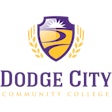
While spectators are returning to sports venues, the sports and entertainment industries have spent the past several months preparing for them. As expected, fans are likely to encounter a broad range of additional measures and technologies to prevent the spread of the coronavirus and meet public health guidelines. However, many venues have also begun to explore options to speed up patron screening without sacrificing the safety and security of all those who attend events.
The use of sensor technologies and artificial intelligence is revolutionizing the patron screening process. Daniel Ward is the director of Training and Exercise at the National Center for Spectator Sports Safety and Security (NCS4), located at The University of Southern Mississippi.
Daniel Ward is the director of Training and Exercise at the National Center for Spectator Sports Safety and Security (NCS4), located at The University of Southern Mississippi.
Through screening, organizations aim to prevent illegal, prohibited and suspicious items from entering the venue and posing a threat to the facility and its occupants. A wide range of metal detectors, X-ray machines and trained staff are employed to create the safest experience possible. While the goal remains the same, emerging technologies offer the promise of accomplishing these objectives with fewer resources, freeing up staff to focus their efforts in other areas and reducing the amount of detection points required to get people safely into the venue.
Owners and operators are charged with evaluating how well existing technologies meet current venue and event needs. Additionally, these individuals are responsible for ensuring that any incorporation of advanced technologies into existing security practices meets the highest safety and quality assurance standards. Rightfully, a new solution seems like the way to go when perceived as superior in meeting those evolving needs. However, it is important to understand the impact emerging technologies will have on our existing operations and ask the appropriate questions of technology and solution providers.
What is the impact on operations?
Most venues have a well-defined screening process that is clearly communicated to part-time and full-time employees, contractors, vendors, suppliers, media, spectators and the many organizations and individuals requiring an awareness of screening procedures and expectations. Additionally, venue security screeners receive detailed and recurring training on the testing and maintenance of screening equipment. Any changes to processes and procedures need to be shared with each stakeholder at a level appropriate for their roles and responsibilities in patron screening.
Another challenge is determining the staffing requirements associated with changes to screening procedures. For example, an emerging technology might seemingly remove the requirement for conducting bag searches for weapons, but it is very likely that a bag search will still be required at any venue serving alcohol. Situations such as this will require further investigation to determine the impact on staffing requirements and the fan experience that may result from both reducing the number of screening points and increasing throughput at each one. The same can be said for integrated ticket scanning, crowd management and secondary screening requirements.
If changes in technologies and processes are to occur, venue and event managers should take the time to fully understand the impact a new technology will have on operations and ensure changes and expectations are effectively communicated. A thorough investigation of technology evaluations and a trial is always a good idea.
What is an acceptable level of risk?
Many venue and event managers place a premium on the throughput of patron screening technologies. While reducing wait times is always a goal, it is important to consider how a higher throughput might increase the accepted level of risk. Although sensor technologies and artificial intelligence continue to result in smarter and more sophisticated screening, decreases in false alarms and increases in throughput are often achieved by reducing sensitivity settings. That reduction can lead to smaller prohibited items making their way into a venue.
Defining an acceptable level of risk and incorporating solutions that meet your needs is far more important and likely less expensive in the long run than focusing solely on throughput. When considering or testing solutions, throughput and false alarm rates should only be considered while operating within the desirable sensitivity settings. In some cases, smaller items making their way into a venue might be acceptable. In others, the increased risk could be intolerable. Speed is important, but we must understand the safety and security compromises associated with increasing ingress rates.
What should be required?
It is not uncommon for technology to outpace policy. The sports and entertainment industry has long grappled with employment or management of a multitude of technologies. The emergence of drone solutions, social media monitoring and facial recognition software comes to mind when examining how quickly we find ourselves trying to embrace or adapt to emerging technologies. The evolution of patron screening has presented similar challenges.
While there are several governances and guidelines associated with metal detection, longstanding requirements might not apply to emerging patron screening technologies. Furthermore, emerging solutions might not meet those standards. Therefore, it is essential to consult existing standards and understand how a technology might impact venue compliance. In some cases, the policy and requirements might be antiquated and in need of revision. In others, the technology might fail to meet the unique needs of an organization or impact compliance-to-liability protections (i.e., DHS Safety Act Designation). Regardless of the reasoning, it is crucial we understand the impact a technology might have on compliance and positively influence the revising or meeting of relevant requirements.
Considerations provided here are limited to the impact on operations, acceptable levels of risk and governances. There are several additional areas that will be important when seeking out the best possible patron screening technology — ranging from cosmetics to the covert or overt deployment of devices.
Prior to selecting a solution, owners and operators should place a premium on defining the specific needs of the organization and venue. Every facility is different, and the events they host further add to their uniqueness. What works for one venue or event may not be ideal for another. It is important we continue to explore those complexities collectively and as individual organizations.
This article originally appeared in the June 2021 issue of Athletic Business with the title "Understanding new patron screening technologies." Athletic Business is a free magazine for professionals in the athletic, fitness and recreation industry. Click here to subscribe.




































